Rachel Carson Prize
The Rachel Carson Prize is awarded annually to the best research paper by an early career researcher in People and Nature.
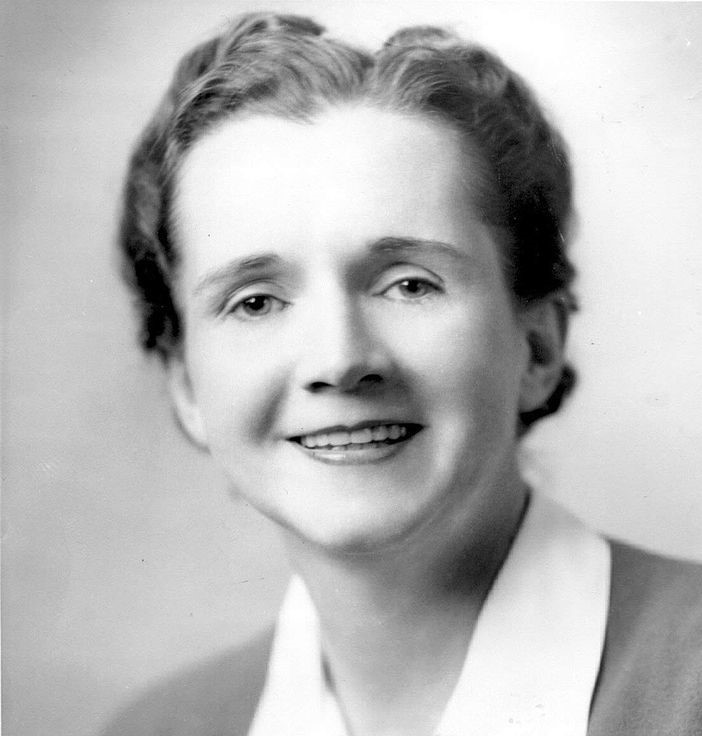
Rachel Carson was a renowned marine biologist and award-winning author, who greatly advanced the global environmental movement. She is perhaps best known for her seminal book Silent Spring, which was instrumental in effecting change in policies over pesticide use, and highlighted wider concerns about the relations between people and nature. Less well known is her book The Sense of Wonder, which was published posthumously (and unfinished), and in which she sought to inspire people to experience nature in the belief that this would engender greater care for it. These two contributions, and many of Rachel’s other works, capture critical components of the ethos of People and Nature. As we say in our opening editorial “The vital importance of nature to people, and of people to the future of that nature, is self‐evident.” We hope Rachel would be pleased that the world is finally catching up with her way of thinking.
The Rachel Carson Prize has been awarded annually since 2020 to the best paper submitted by an early career author at the start of their research career. In the absence of extenuating circumstances, ‘early career’ is defined as less than 5 years post-Ph.D. or -D.Phil. experience according to the date of your graduation certificate. If the first author of a paper considers that they are eligible for this award, they are invited to nominate themselves during the submission process through ScholarOne Manuscripts. Those nominated are in the early stages of their research career; slightly older authors who have had their careers in ecology interrupted or have developed later, can also be considered.
The winner is selected by the Editors of People and Nature at the end of each year, and an announcement made early in the following year. Along with this prestigious prize, the winner receives £500 and membership of the BES, which are presented at the BES Annual Meeting in the UK, if the winner can attend.
A Virtual Issue brings together the winning and shortlisted papers for the 2021 Rachel Carson Prize. Plain language summaries written by the authors and other blog posts about the winning and shortlisted papers can be found here.
Find out about the winning and shortlisted papers for all of the other BES Journal Early Career Researcher Prizes.
For further information and informal enquiries, contact the People and Nature Editorial Office.
Winner of the Rachel Carson Prize 2023
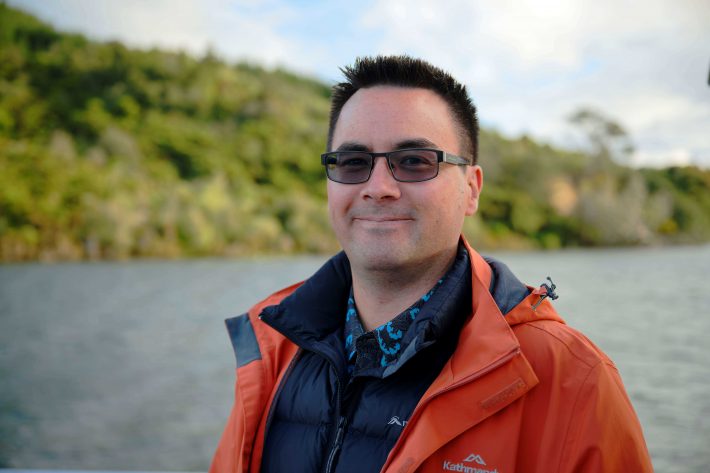
Marc Tadaki
‘Transforming freshwater politics through metaphors: Struggles over ecosystem health, legal personhood, and invasive species in Aotearoa New Zealand’
Marc Tadaki, Joanne Clapcott, Robin Holmes, Calum MacNeil, and Roger Young (People and Nature, 5:2)
When we talk about water in hydrological cycles, wetlands as kidneys, or ecosystems at tipping points, we are using metaphors to describe the environment. Metaphors have the power to help us reform our relationship with the natural world, encouraging us to understand one phenomenon in terms of another. This use of language was the mindset that motivated Marc and his team to look at how metaphors shape freshwater science and policy with this study.
For the metaphors of ecosystem health, invasive species, and legal personhood, they wanted to know: what social and natural features do these metaphors draw attention to, and which relations do they obscure? Furthermore, and uniquely, they asked: how have these metaphors been given specificity, permanence, and force in environmental policy? And finally: what roles do scientists play in generating and applying metaphors in environmental governance?
Across eight meetings over the course of a year, Marc and his team – consisting of himself, a human geographer, three freshwater ecologists, and a freshwater invasion ecologist – debated paradigms and ideas. “It was like we were in a graduate course on ‘metaphors in science and society!”, Marc said. “We were all invested in building our conceptual tools and stretching ourselves. It was a wonderful process grounded in love of knowledge.”
Marc came to ecology through physical geography. “After two years at university struggling to figure out what excited me (it definitely wasn’t electromagnetism or inorganic chemistry), I saw the 2006 Al Gore documentary An Inconvenient Truth and was both horrified and intrigued about how the earth system was changing,” he said. “I switched to physical geography to study environmental change and became fascinated with rivers as complex and dynamic systems. Of course, studying rivers immediately confronts you with things like dams, channelisation, infrastructure, water extraction, anglers, harvesters, and Indigenous and other communities who derive meaning from these systems. To understand rivers and how they change therefore requires understanding society, so through my graduate studies and since I have been very interested in how society relates to rivers, including through creating science and policies regarding rivers.”
Marc is currently a social scientist at the Cawthron Institute in New Zealand, where he researches environmental values, freshwater management, and the social basis of environmental science and policy. In a current project, as part of an interdisciplinary team he is looking at metaphors of ‘belonging’ for introduced and native species – how is it that a species comes to ‘belong’ in a place, and what types of science are produced to shape thinking about belonging?
However, he also holds a BA in film studies, wrote a screenplay at university, and would love to one day teach a course on environmental politics in film. Here are three of his best recommendations for films with metaphorical themes:
Gojira (1954). “The original Godzilla film holds massive power for me, as a metaphor for Japan’s trauma from the atomic bomb and the perils of failing to hold science accountable to human values.”
Wolf children (2012). “A beautiful metaphor for the challenges and joys of motherhood, exploring the different ways that children want and need to be loved.”
Princess Mononoke (1997). “A troubling and profoundly nuanced metaphor for humanity’s relationship with the natural world. Humans and the forest spirits are literally ‘at war’ with each other, though ‘good’ and ‘evil’ exist on all sides and even within every character. How should we act in such a morally complicated world?”
Find the winning paper, and all other shortlisted papers, for the 2023 Rachel Carson Prize in this virtual issue.
Winner of the Rachel Carson Prize 2022
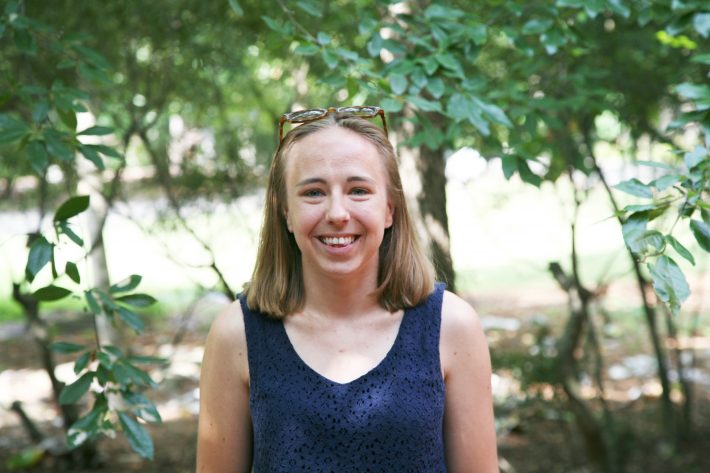
Michelle V. Evans
‘Socio-ecological dynamics in urban systems: An integrative approach to mosquito-borne disease in Bengaluru, India’
Michelle V. Evans, Siddharth Bhatnagar, John M. Drake, Courtney C. Murdock, and Shomen Mukherjee (People and Nature, 4:3)
In this study, Michelle and her team wanted to understand how the interactions between people and mosquitoes change across an urban gradient from multiple disciplinary viewpoints. In practice, this meant combining entomological sampling for mosquitoes, semi-structured interviews with community members, and sketch mapping exercises where people identified mosquito sources in their neighbourhoods, and then putting these data into conversation with each other. Two themes emerged: 1) how people experience changes in mosquito abundance and community composition is mediated by their social vulnerability, specifically their ability to exert control over public spaces, and 2) each of the approaches highlighted different spatial scales, revealing spatial patterns missed by the other.
Michelle has been interested in nature and the environment from a young age, and, during her bachelor’s degree, became more aware of the lack of humans in many people’s imaginations of nature, and the ways in which science and ecology has, at times, been harmful to human communities. After experiencing generations of expertise during her time serving as an Agroforestry Advisor with the Peace Corps in Guinea, Michelle pursued a doctoral degree in Integrative Conservation and Ecology, focusing on disease ecology. This degree programme allowed her to continue exploring the theory and natural history that sparked her initial interest, while providing the perspective and social science tools to explore new ways of ‘doing ecology’.
“Easily the best part of conducting this research was the opportunity to engage more with the people living where we were conducting mosquito sampling,” Michelle said. “When I’ve conducted entomological sampling in the past, interactions with property owners are often brief and consist mainly of explaining the project and results and the occasional wave hello. During interviews, we sat down with residents and got to know them better. They showed us around their neighbourhoods, and we shared many cups of chai. It was truly a pleasure to listen to peoples’ stories, and always nice to see a smiling face the next time we came to pick up freshly caught mosquitoes.”
Michelle’s own research has since transitioned to a more public health focus, beginning a new project co-creating predictive models of disease through a series of participatory modelling workshops to develop new conceptualisations of disease systems, considering perspectives from health practitioners, researchers, and health systems specialists.
Find the winning paper, and all other shortlisted papers, for the 2022 Rachel Carson Prize in this virtual issue.
Winner of the Rachel Carson Prize 2021
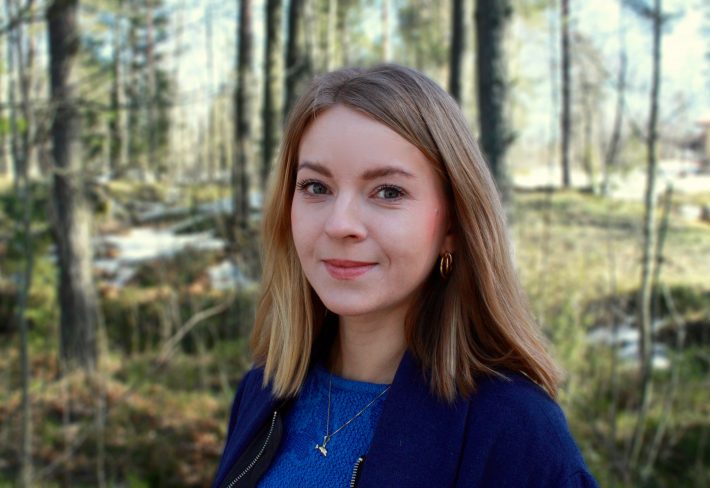
Laura Kaikkonen
‘We may not know much about the deep sea, but do we care about mining it?’
Laura Kaikkonen and Ingrid van Putten (People and Nature, 3:4 pp 843-860)
In this study, Laura and her co-author examine to what extent people care about the impacts of human activities in remote locations. Drawing comparisons to Antarctica and the Moon to tease apart the role of emotions and knowledge in connecting individuals with remote environments, the results demonstrate that, despite widespread minimal knowledge of the deep sea, people do care about mining activities harming such biodiverse hotspots. These findings refute the common idea that, with the deep sea portrayed as unknown and terrifying, it does not require human concern. They also shine a light on the growing demand for natural resources, the increase in invasive human activities in the deep sea, and the broader debate around biodiversity literacy.
Laura grew up in southern Finland and her love for the sea led her to first study oceanography, then marine biology. She fondly describes her award-winning paper as ‘a labour of love’, and exploring the concepts of effect, values, and the symbolic meanings associated with nature as ‘incredibly rewarding’. She particularly enjoyed discovering recent research on the ‘blue humanities’, studying the relationship between people and the oceans.
“This research allowed me to reflect on my own relationship with the ocean and why I care so deeply about the sea,” Laura said. “It also made me think about my position as a researcher with a very limited knowledge of the way people in different cultures relate to the ocean, and how much we still have to learn about it. I was happy to see that most respondents of our study found the deep sea exciting and important”.
Her work on ‘We may not know much about the deep sea, but do we care about mining it?’ inspired her to explore further how the way individuals think about the environment affects their perception of the severity of different environmental risks. She currently works as a researcher for the Baltic Marine Environment Protection Commission and the Deep Ocean Stewardship Initiative, studying the potential conflicts that may arise as a result of human activities taking place in the deep sea and potentially causing damage to deep sea ecosystems.
Find the winning paper as well as the shortlisted papers for the 2021 Rachel Carson in this virtual issue.
Winner of the Rachel Carson Prize 2020
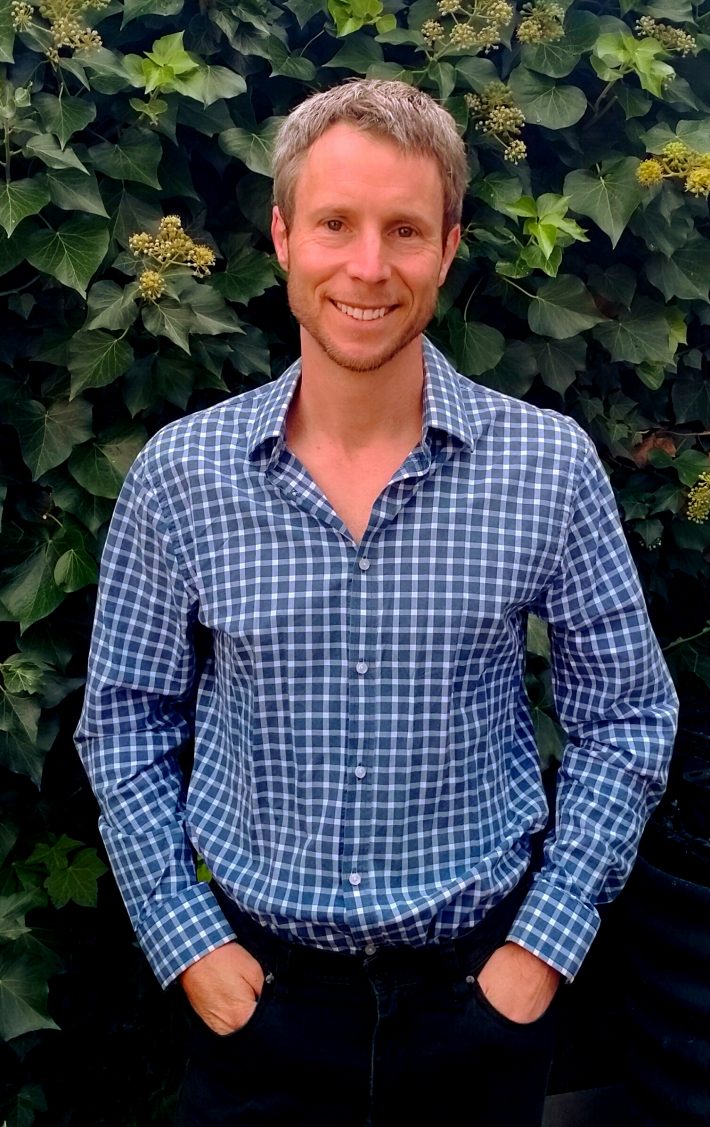
Tristan Derham
Elephants as refugees
Tristan Derham and Freya Mathews (People and Nature, 2:1 pp 103–110)
Many authors have described displaced animals as refugees. In this research Tristan Derham and Freya Mathews tested whether there were solid ethical and ontological reasons for that claim. They found that if one follows the criteria laid out in the Refugee Convention then some African elephants are refugees, at least in a moral sense. Tristan said: “Roughly speaking, some elephants have been displaced from their countries by persecution and are too fearful (or physically unable) to return to the protection of their countries. Describing the situation of those animals in terms of refugeehood is a different approach to animal ethics, which usually focusses on rights or welfare. Perhaps seeing animals in this way opens doors to new kinds of policy for them, and more action on the ground.”
As well as the Research Article, you can read more about the study in the authors’ plain language summary Animal refugees.
Lead Editor, Robert Fish said:
“I became a lead editor on People and Nature because I wanted to be part of a journal that disrupts, as well as explores, our assumptions about the categories of ‘people’ and ‘nature’. Elephants as refugees is a paper that embodies the spirit of what I imagined our journal to be. Thought-provoking, topical and eye-catching! A worthy winner. One of our early greatest hits.”
Associate Editor, Clare Palmer said:
“‘Elephants as Refugees’ is the kind of paper every editor hopes to receive. It offers an original approach to a pressing, real-world issue: the displacement of threatened elephants. It’s clearly and engagingly written, accessible to a wide audience. And it challenges readers to think about how a familiar categorization – the “refugee” – might apply in a very unfamiliar context – African elephants. It’s a perfect fit for People and Nature, not just because relationships between people and nature are at the heart of the paper, but also because by arguing that displaced elephants are, in a moral sense, like human refugees, it forces a rethink of the very distinction between people and nature.”
Clare has also written a blog post about this article Can wild animals – like elephants – be refugees?
Tristan Derham grew up in rural Western Australia. His love of ecology took him around that state, working as an environmental consultant on impact assessments for remote mine sites. He is currently completing a PhD at the University of Tasmania, a project which combines both ethical and quantitative approaches to questions about rewilding – what wildness is, what sets rewilding apart from other environmental practices and what rewilding might look like in an Australian context. His academic interests lie at the nexus of environmental philosophy, animal ethics and ecology.
Find the winning paper as well as the shortlisted papers for the 2020 Rachel Carson in this virtual issue.
Winner of the Rachel Carson Prize 2019
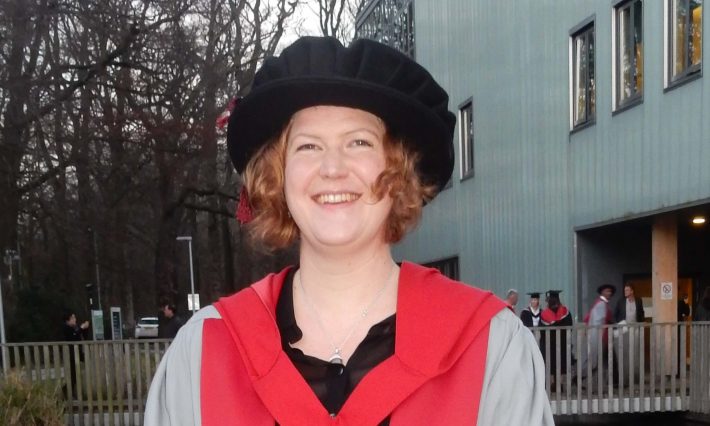
Beth Brockett
Guiding carbon farming using interdisciplinary mixed methods mapping
Beth F. T. Brockett, Alison L. Browne, Andy Beanland, Mike G. Whitfield, Nigel Watson, George Alan Blackburn, Richard D. Bardgett (People and Nature, 1:2 pp 191–203)
Beth’s study used a range of different methods to collect data in order to create soil carbon farming maps. This included collecting farmers’ knowledge about their land, via walking interviews, and surveying soil properties. The maps contained scientific accounts of where soil carbon is stored and where it could be increased, alongside information on how farmers understand their land, its management and their willingness to engage in soil carbon farming practices. As well as the Research Article, you can read more about the study in the authors’ plain language summary Working with different sorts of knowledge to increase the amount of carbon stored in our agricultural soils.
Lead Editor, Rosemary Hails described this paper as a great example of a highly topical issue, that is the sequestration of soil carbon, and how to get more people to adopt practices to do this. The combination of environmental and social science that provides new insights into the potential, and the barriers, to advance this cause make this a particularly interesting People and Nature paper. It not only informs the issue of soil carbon sequestration potential itself, it also demonstrates and reflects on the crucial need for interdisciplinary approaches.
Associate Editor, Yvonne Buckley said:
“This paper exemplifies the approach of People and Nature, it demonstrates the importance of investigating the ecological and social aspects of carbon farming together. The benefits of the integrated “mixed methods” approach to mapping carbon are clearly articulated, in particular the tensions between qualitative and quantitative findings were a rich opportunity for new insights. Scientific breakthroughs are often made when tensions between previously held beliefs or hypotheses are confronted with new data or new ways of looking at the world.”
Beth Brockett works for Natural England as a Social Science Specialist. Beth is the Social Science Lead for the People and Nature Survey – a national survey which gathers evidence relating to people’s enjoyment, access and attitudes to the natural environment, as well as its contributions to our health and wellbeing. She also has a particular interest in working with different forms of knowledge to promote sustainable land management. Beth’s background is in social science, ecology and soil science and she has previously worked as a farm conservation adviser, an interdisciplinary academic researcher and as a community development practitioner. Beth has published in a range of peer-reviewed journals, a Parliamentary briefing paper and for specialist magazines.
Beth has also written a blog post about nature conservation and social science and being a social scientist at Natural England.
Runner-up of the Rachel Carson Prize 2019
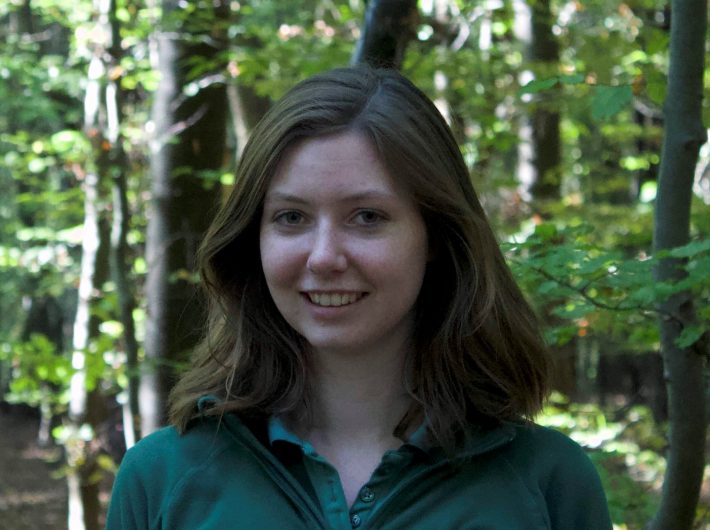
Eleanor Tew
Quantifying cultural ecosystem services: Disentangling the effects of management from landscape features
Eleanor R. Tew, Benno I. Simmons, William J. Sutherland (People and Nature, 1:1 pp 70–86)
Eleanor’s study explores how policy and land management can influence the delivery of ecosystem services. Lead Editor, Kai Chan describes Eleanor’s paper as an important contribution to understanding how changes in the biophysical characteristics of a site impact the non-material values that people attribute to the site. He says “This is a question of fundamental importance as we struggle to balance the protection of material contributions from nature to people with maintaining places that people want and love. Tew et al. develop novel participatory mapping methods to approach this question quantitatively and rigorously.”
Associate Editor, Peter Bridgewater, who also write a blog post about the paper said:
“People and Nature does exactly what it says on the tin: it publishes high quality papers on how people interact with the rest of nature. Using novel approaches to seeking people’s views on land management Eleanor Tew and colleagues have written a paper that fits exactly the bill for People and Nature and exemplifies the sort of papers we would like to see in future!”
Eleanor is a conservation scientist working to apply scientific evidence to improve management of the natural environment. Eleanor’s PhD was a CASE studentship collaboration between the University of Cambridge and Forestry England, evaluating ecosystem service delivery from UK forests. It was during her PhD that she researched and wrote her article on cultural ecosystem services for People and Nature. Following a short Fellowship based on the practical application of her PhD research, Eleanor now works for Forestry England where she manages the Forest Resilience Programme in the East District. This involves coordinating the long-term management response to climate change, tree disease and societal pressures to keep our forests functioning, healthy, and continuing to deliver a wide range of ecosystem services and biodiversity conservation for generations to come. She is also an Academic Visitor to the Conservation Science Group at Cambridge University. Outside of research and work, she enjoys anything that involves being outdoors (particularly in forests!).
Eleanor has also written a blog post about her paper and the process of writing it and getting it published.
Like what we stand for?
Support our mission and help develop the next generation of ecologists by donating to the British Ecological Society.